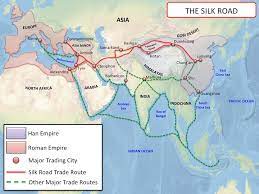Kenan AĞAZADE
The interconnection between China and members of Association of Southeast Asian Nations (ASEAN) is expanding from an original focus on infrastructure and logistics flow to financial cooperation.
According to Global Times, it is a step further in strengthening connectively despite headwinds created by the pandemic
The Chinese leader Xi Jinping supports this connection because it may help in the realization of many commercial agreements. China started playing a major role for the Southeast Asia and the signing of a large number of documents has become a tradition for China. The most significant block concerns the access for Chinese companies to regional financial platforms and instruments, first of all credit lines in Yuan.
Beijing has been planning to leave the dollar and euro in mutual payments since the middle of the 2000s. Against the backdrop of western sanctions and Washington’s talk of possibly denying China’s largest banks correspondent accounts in the US and the EU, in the event of escalation in Taiwan. This has made transactions in alternative currencies a vital necessity. Therefore, even though China’s currency is not freely convertible, government is still moving towards an increased use of the Yuan.
According to Xi Jinping, as of the beginning of 2021 the share of transactions in national currencies makes up seven percent of the trade volume, according to data from the international media agencies, and according to the Chinese custom agencies. Agreements on loans in yuan were signed by banks in Cambodia (6 billion yuan from the State Development Bank of China), Laos Bank (12 billion yuan from the State Development Bank of China and 3 billion from the Export-Import Bank of China) and Myanmar bank (3.9 billion from the Export-Import Bank of China for the economic projects near the border zone).
Moreover, the Direct Investment Fund signed agreements on the creation of a joint investment bank with structures from the state finance for bringing Chinese companies to regional platforms, while with the China Construction Bank it signed an agreement on a joint credit mechanism that will facilitate Chinese investments in projects in the South East Asia.
China does not want sign anything serious in the field of energy politics. China agrees also on the main conditions for supplying gas along the “western route.” For that reason, the sides had already signed framework agreements on gas supplies along the “western route.” The history of the “eastern route” has shown that several years can pass before the commercial gas contract is signed.
China has “the strategy that the Russian needs the Chinese and Russia should use its resources, basement and infrastructure; in order to redirect supplies to China.
However, in the foreseeable future China will replace the European gas market for Russia because Gazprom will need Chinese credit to finish the Power of Siberia and the Chinese government are ready to pay more for gas coming through the “western route” than they already pay for Turkmenistan gas (about $550 per 1,000 cubic meters more than what Gazprom offers for gas from Western Siberian deposits).
Under these conditions, the most important aspect for China is the integration of the Silk Road Economic Belt (SREB). This integration will increase the image and sustainability of the Shanghai Cooperation Organization as a coordinating platform for dialogue between the different states and their initiatives where they mas discuss “the long-term objectives for promoting the free trade zone between the neighbors and China.” Thus, for now, it is a tactical objective of China and China will not left this issue for the future.
Finally, the Silk Road Economic Belt is advantageous for all regional states. They will receive access to resources from the Silk Road Construction Fund for the development of their economy, while China will obtain a reliable transit route without political risks and is supplied with instruments from the Customs Union. If the countries realize these initiatives, Beijing will create a great union in the South East Asia in which China will be the guarantor of security and also stay as the largest economic player.

